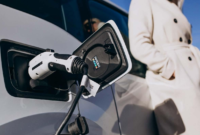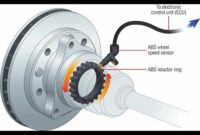New Euro 7 anti-pollution law: it is not so harsh, but it is more difficult for car brands.
New Euro 7 anti-pollution law
The European Comission indicated the proposal on the new Euro 7 anti-pollution law which will be applied to new cars in the Old Continent from July 1 of the future year 2025 for passenger cars and vans and from July 1 of the year 2027 for trucks and buses.
See also: DGT with more sanctions, suspensions and fines for 2022 in new traffic law in Spain
“Now that we have agreed to end CO2 emissions for the sale of light vehicles in 2035, we must tackle the other emissions”, indicated the European Commissioner Thierry Breton.
Nitrogen oxide (NOx) emissions must be minimized by 35% for light cars and 56% for heavy cars with respect to the previous Euro 6 law.
![]()
Emissions from brakes and tires will be limited for both electric and internal combustion units. Brake particles are due to the wear of the brake pads.
For the European Comissionelectric cars are 40% heavier than an average unit with an internal combustion engine.
Although electric units also use the regenerative braking to minimize speed, reducing brake pad wear.
![]()
The Euro 7 Law that neither manufacturers nor environmentalists like
Oliver Zipsepresident of the ACEA (Association of European Manufacturers) Y CEO of BMW indicated that “The environmental benefit of the Commission proposal is very limited, while it considerably increases the cost of vehicles.”
Environmental groups consider that the new norm euro 7 excessively pandering to brands. the pressure group Transport & Environment (T&E) I affirm that “The proposals for cars are so weak that the car industry could have written them themselves.”
According to Luca de Meo, CEO of Renaultthe main drawback is the price that lies in adapting the new models to Euro 7.
![]()
According to European Commission «the issue of the cost of Euro 7 for consumers was essential for us. With a cost of around 100-150 euros per car (…), European consumers will not have to delay the purchase of a new vehicle”, assured the commissioner Thierry Breton.
Comply with regulations throughout the life of the car
The concern of the manufacturers is due to the fact that the vehicles will have to comply with the standard in real conditions of use and throughout its useful life.
The useful life of a car, according to the Euro 7 Law, are eight years or 160,000 km, relaxing the limit of its emissions by a factor of 1.2 up to 10 years or 200,000 km. Monitoring short journeys, less than 10 km and with a cold engine.
![]()
Therefore, the units must have a system that heats the catalyst above 400ºC, after 15 km.
Also opting for two three-way catalysts, a new particulate filter and an SCR system for selective catalytic reduction of ammonia.
The batteries of electric and plug-in hybrid cars should last 80% after five years or 100,000 km and 70% after eight years or 160,000 km.
![]()
You will also need to update the on-board diagnostic system (OBD) to one who offers on-board monitoring (OBM) that notifies about changes and faults in the engine in order to prevent the chip tuning.
![]()
Euro 7 includes one for PHEV
The European Comission has indicated that the cars be homologated according to various criteria based on the Euro 7. Existing a Euro 7+ for cars with combustion engine and hybrids.
Existing side by side Euro 7G for the plug-in hybrids and PHEVs with geofencing technology.
![]()
So that “The manufacturer must install a driver warning system in these vehicles to inform the user when the traction batteries are almost empty.”
One of the unknowns is where to recharge the battery in 5 km, a large number of PHEV they cannot use the semi-fast loads (22 kW).
![]()
One solution is force battery charging with internal combustion engine, shooting up fuel consumption. The new law is just a proposal, it remains to wait for it to be approved.
Writing by Gossipvehiculos/Source: www.motorpasion.com




